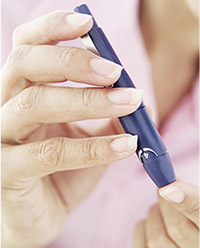Simplify entertaining by serving food buffet-style. Convenient for both the host and company, buffets allow guests to choose their favorite foods while they mingle. Beware of the one item not on your invitation list: bacteria. With a few simple precautions, you won’t have to worry about this unwanted guest making an appearance.
Plan ahead
Once you’ve finalized your menu and guest list, create a plan for your buffet table keeping in mind how many warming trays, slow cookers and/or chafing dishes will be required. You’ll need cutting boards, serving utensils, instant-read thermometers, and containers or zip-tight plastic bags for storage and leftovers. Also, don’t forget to start making space in the refrigerator and freezer. Borrow items from friends or consider rentals for a large party.
Cooking in advance
Foods should not be tasted until they reach a safe internal temperature. Use a clean utensil each time you take a bite. We recommend beef and pork be cooked to 145°; ground beef and pork to 155°; poultry and casseroles to 165°. Foods should never be partially cooked and finished later. If food isn’t going to be served immediately, store it in shallow containers for easier reheating. Use the stovetop, microwave or oven to reheat food. It is not recommended to reheat food in slow cookers or chafing dishes because foods may sit at unsafe temperatures for too long.
Serving
Keep hot foods hot (at 140° or above) and cold foods cold (at or below 41°) in the refrigerator until serving. This ensures food will be held at the safest temperature for the longest period of time. Arrange food on small platters and dishes, separating cold food from hot. When it comes time to replenish, wash or replace the platter and serving utensil before adding food. Keep several instant-read thermometers on hand, washing after each use.
Cleaning up
With the exception of breads, cookies and uncut fruit, discard all perishable foods, especially meat, poultry and eggs, that have been standing at room temperature for two hours or more – that’s when harmful bacteria begin to grow. Refrigerate or freeze any of those leftovers in shallow containers. Always reheat leftovers to 165°.




 And Other Power Foods >
And Other Power Foods >